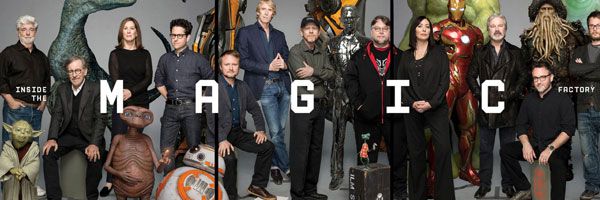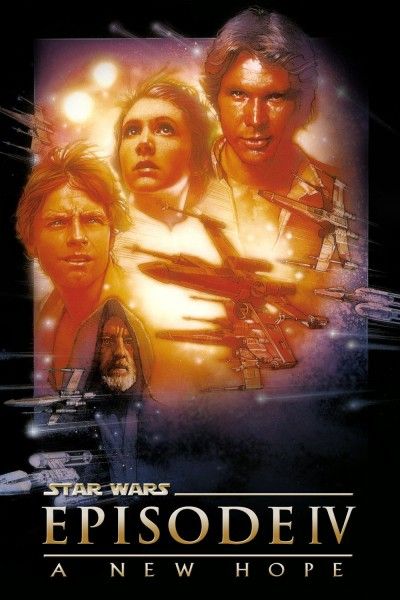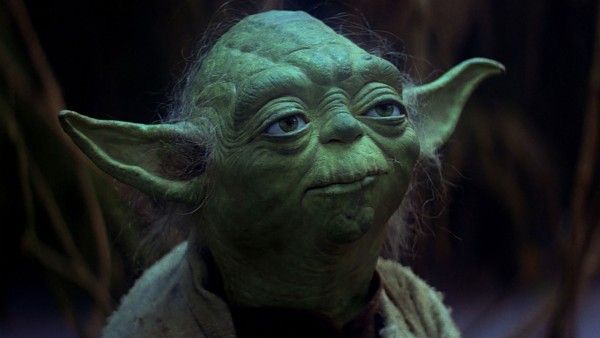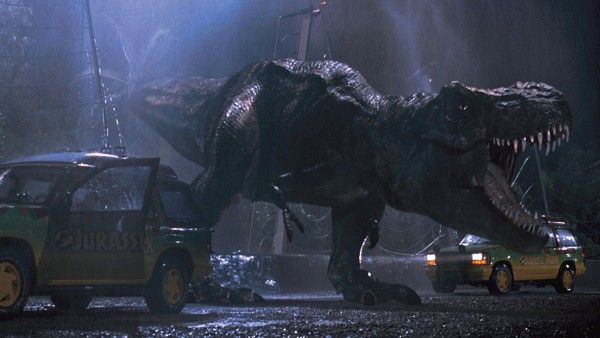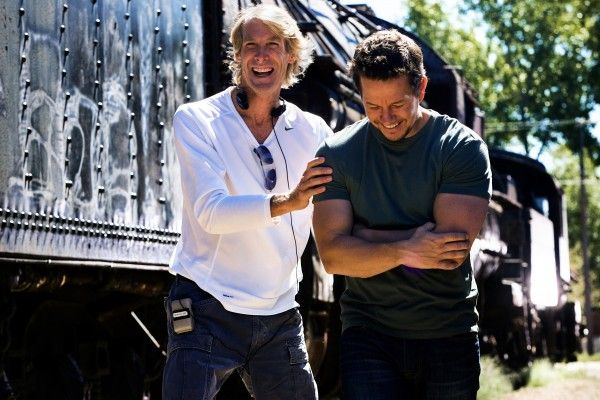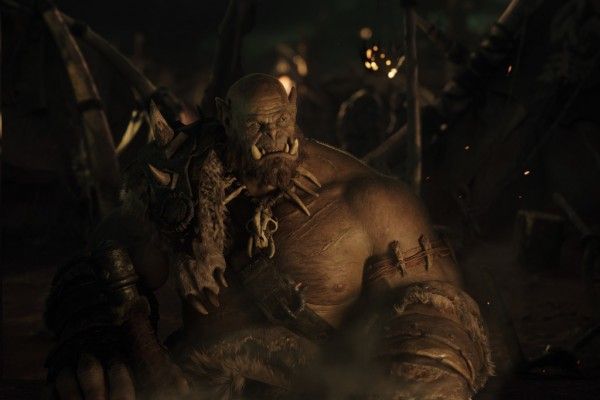George Lucas had a tough time making Star Wars happen. Not only did none of the studios have any interest in making a space epic but, on top of that, Lucas himself considered the project impossible because the technology needed to make it didn’t exist. However, after scoring $25,000 to finish the script and a green light to go into production from 20th Century Fox, Lucas had to make it happen. Fox didn’t have a special effects department, so it was up to Lucas to solve the technology issue and to do that, he created Industrial Light & Magic.
Forty years later, ILM has worked on 317 movies, hit it big at the box office and earned numerous accolades for their achievements. In honor of the milestone, ILM has shared a video montage of their work and Wired shared a piece called “The UntoldStory of ILM, a Titan That Forever Changed Film” featuring quotes from the main players involved in the company's climb to the top. Check out the video below followed by 19 things to know from the Wired article.
1. It all began behind the Van Nuys airport with a bunch of 20-somethings.
“We hired a handful of people—a lot of young kids, basically. Very few of them had worked on a feature film.” Lucas continued, “I wanted to set up shop in San Francisco, but there was no film processing lab, so John insisted we stay in Los Angeles. We found an industrial warehouse space in Van Nuys, next to the airport.” It was as unglamorous as it sounds. Model maker/supervisor Steve Gawley recalled, “There was no interior; our walls were two-by-fours, Visqueen stapled onto them. Every once in a while we’d get crazy with the music - the big record was Fleetwood Mac’s Rumours - and you’d have to turn it down because the walls were plastic.” VFX supervisor John Dykstra also added, “The warehouse was probably 1,300 square feet and smelled like a gym locker. It was hotter than hell. If you lit a model with 6,000 watts, you could get to 130 degrees.”
2. Where’d the name ILM come from?
“We were working on the articles of incorporation and we said, ‘What are we going to call this thing?’ We were in an industrial park. They were building these giant Dykstraflex machines to photograph stuff, so that’s where the ‘Light’ came from. In the end I said, ‘Forget the Industrial and the Light—this is going to have to be Magic. Otherwise we’re doomed, making a movie nobody wants.” - Lucas
3. Only one Star Wars VFX shot was finished 9 months before release.
Steven Spielberg recalled, “I saw the film in a rough cut. No effects, just black-and-white World War II newsreel footage George had cut in to show where the star wars were actually occurring.” Lucas noted, “We had 800 shots to get through. They’d spent a year and a million dollars and had one shot—a cannon going boom, boom, boom. I said, ‘OK, at least we’re on our way.’ This was in August 1976. The film came out in May 1977.”
4. Lucas didn’t even realize Star Wars was such a hit when it first came out.
After Star Wars hit theaters in May of 1977, Lucas rushed off to Hawaii for a vacation so he didn’t find out that folks were going nuts for the film until his friends contacted him about a week later. After that, things would change for ILM big time. Lucas explained, “Before that I was completely burned out, so I didn’t really care. But then I began to say, ‘Gee, I could do the sequels.’ We got a place in San Rafael and started moving.”
5. Yoda was the biggest challenge of Star Wars Episode V: The Empire Strikes Back.
Lucas noted, “We knew how to fly spaceships; the thing we didn’t know how to do was have a 2-foot creature make you believe that it was a real live thing and not just a Muppet.” This is where the ILM computer division came in. “I started what I called the computer division: Ed [Catmull], Alvy Ray Smith, and a whole bunch of MIT guys Ed knew. We brought them in and put them in a building next door to ILM. ILM didn’t want anything to do with them.” He continued, “I gave [Ed] a list of things I wanted to build: a digital editing system, a sole-purpose graphics computer. It was a visual computer—the Pixar.” Catmull also added, “The goal was to get it so you could mix computer-generated images in with live action.”
6. Pixar bid against ILM for The Abyss.
James Cameron explained, “Set the clock forward to 1988. I’m starting to do The Abyss. There was one sequence in that film that I imagined but couldn’t figure out—the pseudopod sequence, the big water weenie that comes through the ship and makes faces. CG was completely unproven. We didn’t know how it could be integrated with film.” Catmull added, “Pixar, as a new company, bid against ILM to do the effects for The Abyss. But Cameron gave the job to ILM, probably wisely, because if it didn’t work with the computer then he knew they could do it some other way, whereas we only had one way of approaching the problem.”
7. The Abyss was a “first date” with ILM. Terminator 2 marked the second date and “Hollywood’s biggest-ever gamble on computer graphics.”
Cameron recalled, “Terminator 2 was the most expensive film ever made at that point, and it all hinged on this liquid metal guy. So now we’re making, essentially, one of the two main characters of a $100 million movie a CG effect. That was really scary.” This is where VFX supervisor Steve “Spaz" Williams and VFX producer Mark Dippé came in. Dippé explained, “We did whatever the fuck we wanted, and because we were from ILM, people gave us respect.” Williams added, “We made so much noise that they put us in an old sound-mix bay with soundproof doors. We called it the Pit.”
8. The sound of the T-1000 going through the doors at the mental institution is actually dog food.
Sound designer and director Gary Rydstrom explained, “Turns out that if you hold a can of dog food upside down, the sound of that cylinder slowly coming out of the can is the perfect combination of mud, metal, and suction. That sound effect cost 75 cents.”
9. Phil Tippett of Tippet Studios got the OK to do the Jurassic Park dinosaurs using stop motion, but Dippé, Williams and VFX supervisor Stefen Fangmeier gave CG a shot anyway.
Former ILM President Jim Morris recalled, “Phil was gonna do the dinosaurs with stop-motion, and we were gonna composite them into the plates with the actors.” However, Williams had other ideas, “We said, ‘Why don’t we just fucking build the whole thing in CG?’ The authorities here told me not to bother trying. But we knew digital was capable of this shit.” The trio went to the Oakland Zoo, filmed elephants and rhinos, and examined how their skin folds. Williams recalled, “I was riding my bike and I ran into a guy from Tippett’s department. He says, ‘What are you working on?’ I say, ‘I’m building the T. rex.’ And he goes, ‘What the fuck are you talking about? We’re doing that!’ He almost got physical with me.” Dippé continued, “The CG dinosaur was accidentally shown to Kathleen Kennedy [one of Jurassic Park’s producers].” Williams further explained, “I finished a CG demo on Sunday night, and the next day Muren and Kathleen Kennedy came walking in and the T. rex walk cycle was playing on a big monitor. She stops and goes, ‘What’s this?’ I say, ‘I’m just messing around, just working on stuff.’” Dippé added, “After Kathleen saw the test, the decision was made to show it to Steven. Dennis brought it down to LA and projected it for Steven at Amblin.” Lucas recalled, “The test blew everybody away. People cried.”
10. Twister got a green light before there was a script thanks to a proof-of-concept shot.
Kennedy recalled, “ILM did a proof-of-concept shot for Twister. The minute we took that shot into the studio and they saw it, they said, ‘Done. We want to make it.’ We didn’t even have a script yet!
11. Michael Bay likes to yell a lot.
Spielberg stated, “Michael Bay is the most demanding special effects director ever. When we do the Transformers movies, Michael lives at ILM with them. He just goes up and camps out there.” VFX executive producer Wayne Billheimer recalled working with Bay on Transformers: Revenge of the Fallen, “There was a point toward the very end of production when he lost it. He had just come from a screening with Jerry Bruckheimer and didn’t have a complete third act. He called me, screaming: ‘I just saw a movie that I can’t fucking release!’ It was nuclear-level Bay screaming. All I could do was scream back at him. There was a good five minutes of screaming along those lines. The next day he goes, ‘That was a fun little yell yesterday.’” Billheimer added, “He gets very hot very fast, and very sweary, which is always entertaining.”
12. George Lucas still thinks a Howard the Duck movie will work.
"Someday, I hope, Marvel will make a new version of Howard the Duck, and you'll see it could be a good movie. A digital duck will make that thing work." - Lucas
13. Warcraft might feature some of ILM’s most amazing work in years.
“The third time I almost soiled myself was seeing the concept art for the film we’re working on now, Warcraft; it’s the most amazing work we’ve done in the 20 years I’ve been here.” - Phillips
14. If ILM ran the space agency, we might have colonized Mars by now.
“I always thought that if ILM had run the space agency we’d have colonized Mars by now.” - Spielberg

